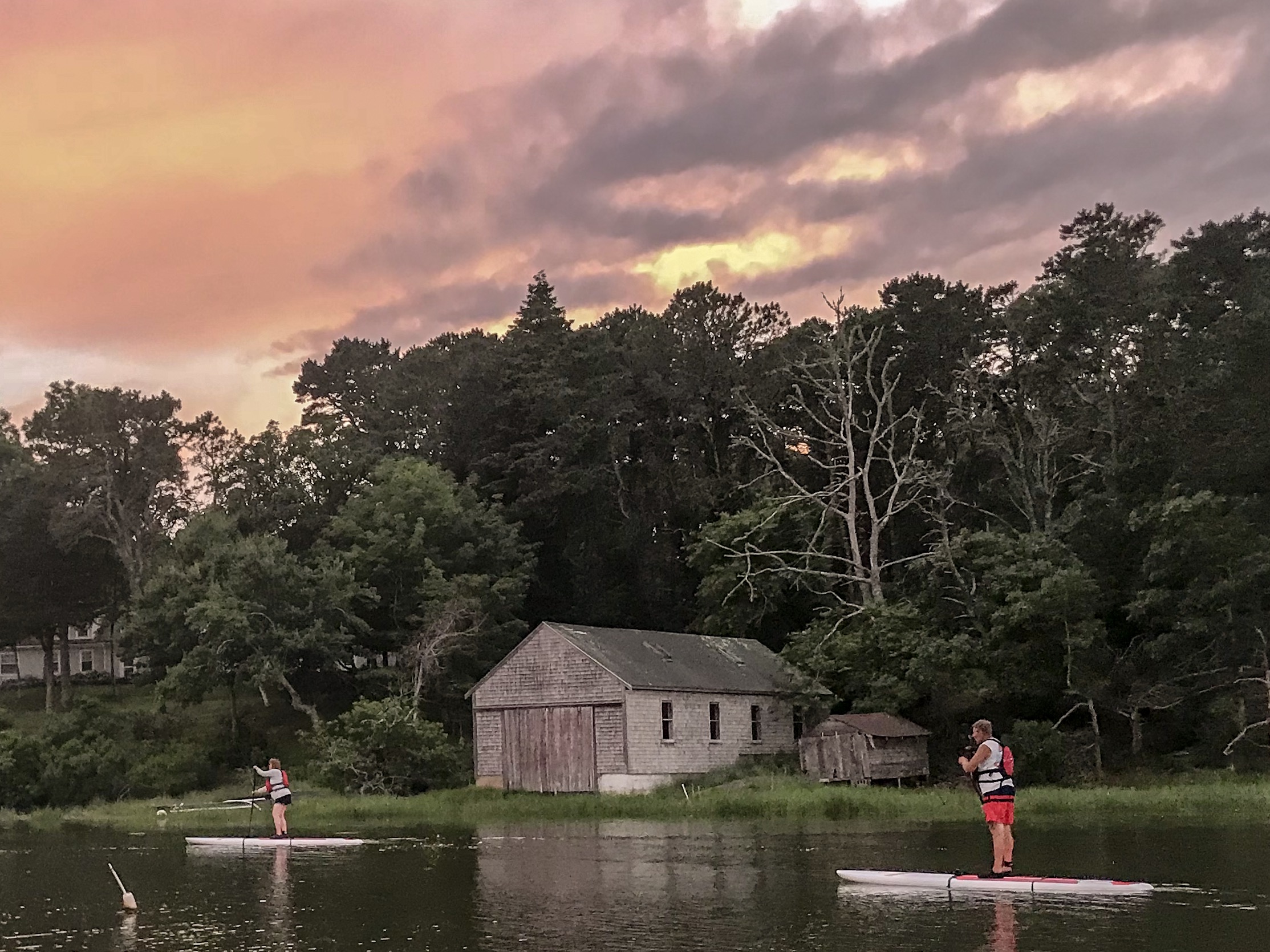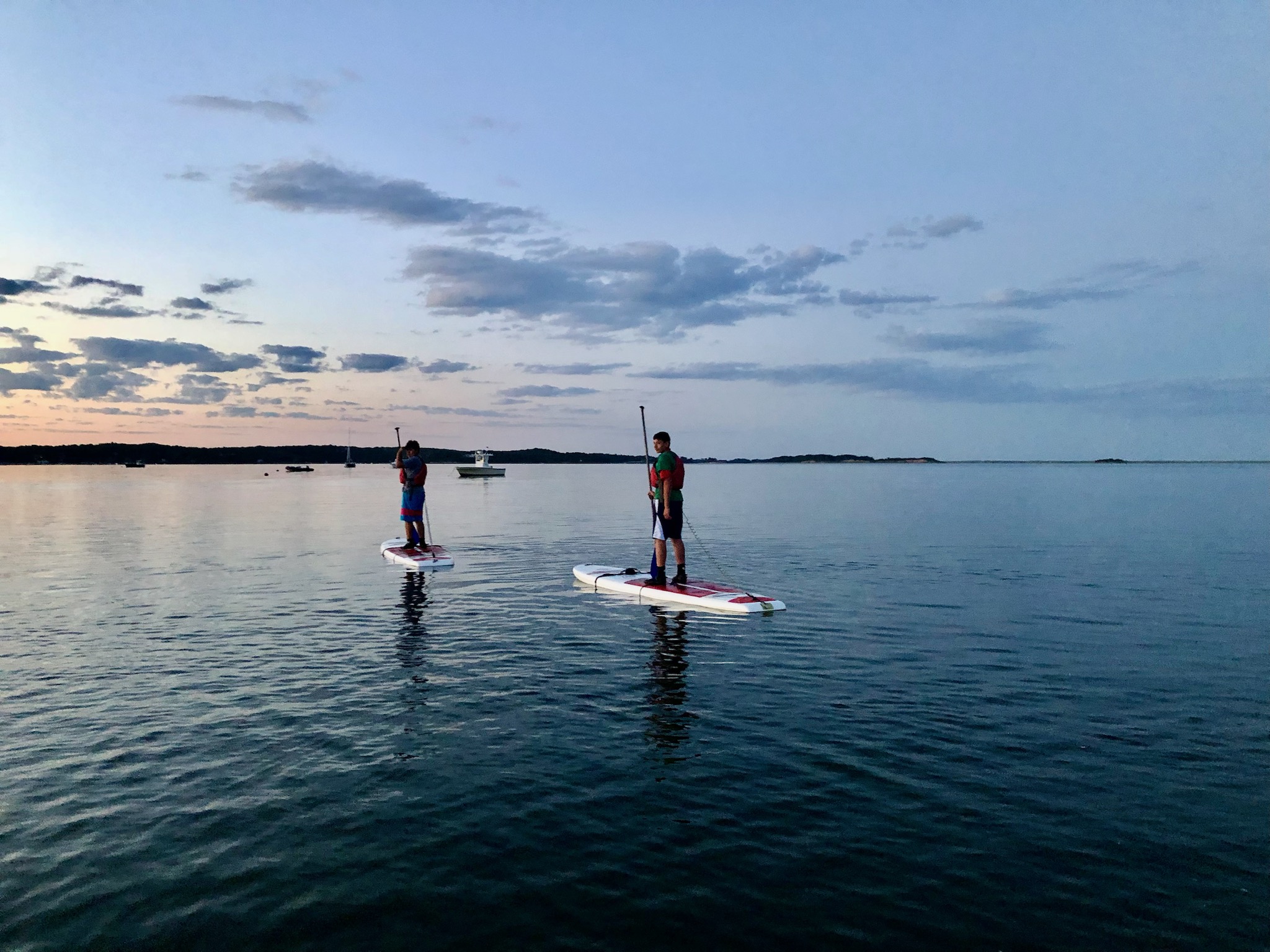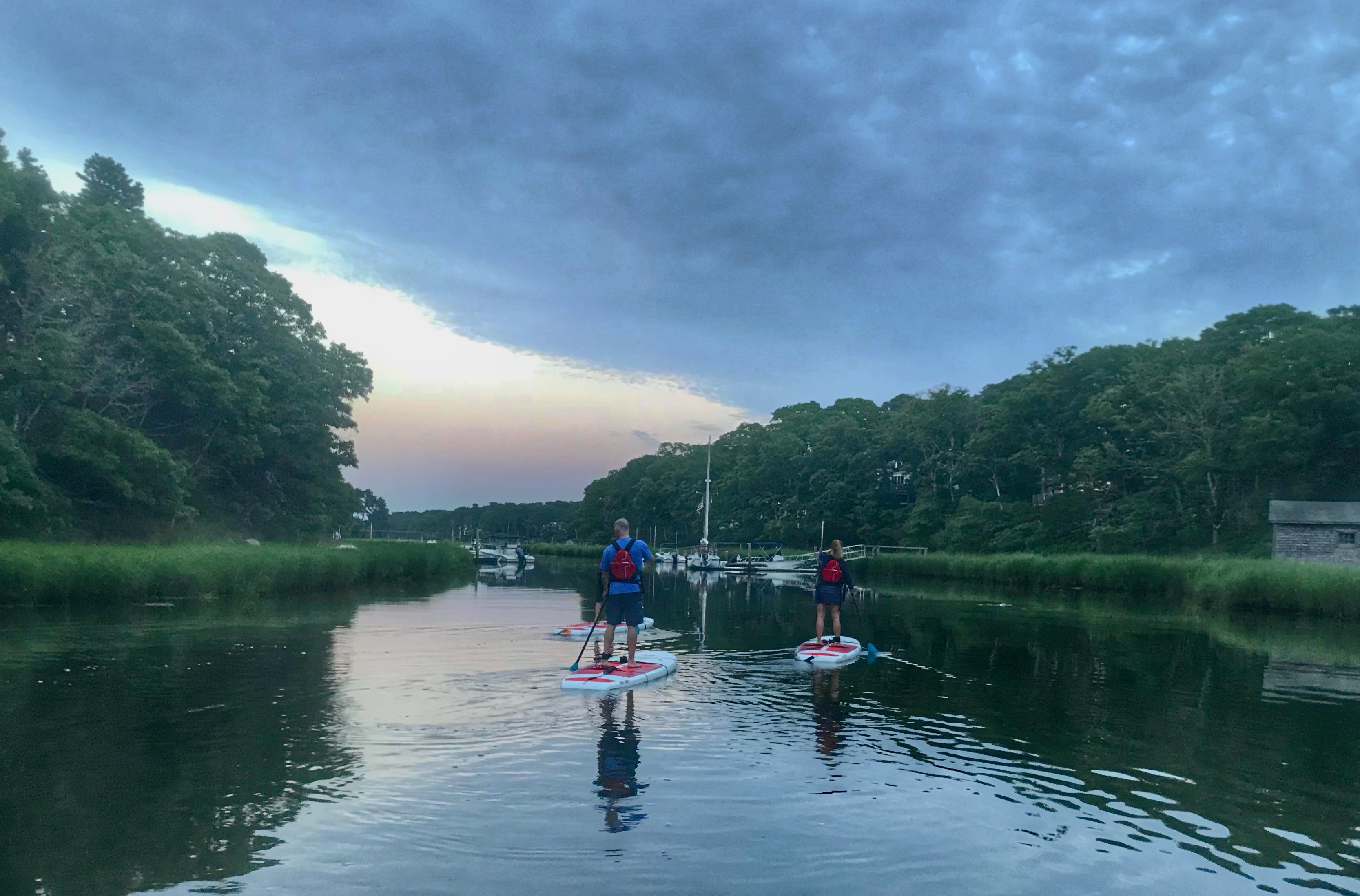The days are getting longer and warmer and it’s time to dig out the paddleboard and get back on the water. But before heading out for the first SUP of the season, there are a few things to think about. Here are six tips to get you on the water safe and sound.

Check Your SUP
Before the first paddle of the season, it’s always a good idea to pull out your SUP and give it a once-over. Begin by looking for cracks, holes, and even teeth marks (I pulled my white water boat out the other day while digging out a paddleboard from storage, popped the kayak on my shoulder, and was rained on by the remains of one of my bulkheads that had become someone’s winter nest).
Most cracks and dings on boards can be sanded and then repaired with two-part epoxy. Always check to make sure the epoxy will work with the board material—when in doubt, contact the manufacturer.
Next, check all bungee cords and the leash attachment. Replace any old “sunburned” or stretched-out cords. Relatedly, check your leash to make sure the velcro is still functional and that the material is not worn.
Finally, if you have an inflatable SUP, pump it up and let it sit for a day to make sure there are no leaks.
Refresh Your SUP Gear
Once your SUP is ready to go, turn your attention to your PFD and paddle. At the beginning of each season, I like to wash my PFD, confirm the straps and zippers are functional, make sure all the pockets are empty, and check that my whistle still works. I also treat my PFD with 303—a product that helps prevent discoloration and fading caused by the sun—to help protect against UV degradation.
The paddle check is pretty straightforward—look for hairline cracks and wear on the blade. Most small cracks can be repaired with some sanding and a bit of two-part epoxy. If not, it’s probably time for a new paddle. It’s also not a bad idea to treat movable parts on an adjustable paddle with 303 to keep them lubed.
If you’re like me, most of your paddling gear has sat pretty much where you took it off at the end of last season. It’s a good idea to give your paddling clothes, jackets, and paddling pants a pre-season cleaning. I like to wash my paddling jackets and pants with a Nikwax Tech Wash and then recoat them with 303 or Nikwax TX.Direct. When washing dry tops, be mindful of the latex gaskets.

Mind the Water Temperatures
Now that you’re ready to hit the water, don’t forget that early in the season the water is likely cold. The air may be 80 degrees, but the water—especially below the top two to three feet—can still be in the 50s. This is particularly true for saltwater; freshwater locations may be a bit warmer.
To ensure that you’ll stay warm if you take an expected plunge, it helps to have the right gear. Here are a few options I keep in the truck to mix and match to the local conditions:
- Dry suit or semi-dry suit. My go-to for winter paddling and wet chilly days, a dry suit is essentially a sealed bag that will keep you dry if you take a dip. It’s great in a variety of weather conditions, especially if you’ve correctly layered underneath it. (Think of paddling like hiking—use a variety of fleece and synthetic long underwear based on weather and temperature.) The main downside of a dry suit is expense—a semi-dry suit, which lacks a latex neck gasket, will run you $400-$600 while a proper dry suit can cost upward of $1,000.
- Paddling jacket and pants. Different than a dry suit, these will keep you dry as long as you are not in the water. Think of them essentially as rainwear, good for wind and a bit of drizzle.
- Wetsuit. There are two main styles of wetsuits: full and “Farmer John” (i.e., sleeveless). They also come in a variety of weights. I like a Farmer John style 2mm wetsuit for warm spring and cool summer days because it gives me more freedom in the arms, I’m less likely to overheat, and I can match it up with a variety of tops to maximize mobility and warmth.
- Paddling tops. There are several styles of paddling tops—a semi-dry top (essentially a rain jacket with latex seals at the wrists to keep water out), a short-sleeve semi-dry shirt, and a neoprene top. I prefer a semi-dry long-sleeve top, hooded, with a tunnel. The tunnel is designed for kayaking but works great when tucked into paddling pants for an added layer. I also have several short-sleeve paddling jackets—one waterproof, which I use for river surfing or kayak surfing, and a second which is a wind jacket that I treat with permethrin to keep the bugs off during sunset tours.

Don’t Forget Your Feet
Footwear is key for all seasons of paddling. In my 25+ years of guiding kayaking and paddle boarding, I can’t tell you how many times I’ve seen barefoot paddlers step on something sharp—myself included, which is why I keep a few options in the truck to adjust to conditions: high-top wetsuit booties (which are great with a dry suit), low-top wetsuit booties to pair with a wetsuit, and paddling shoes in case the water is warm enough that I’m wearing shorts.
Gather SUP Accessories
On top of all these core paddling items, I also like to assemble a dry bag of paddling equipment that includes sunscreen, a first-aid kit, water, an extra layer (or two), and some snacks.
Additionally, I’ll stash some paddling-focused equipment in the truck, where it will stay for most of the summer. Two favorites that folks are always jealous of are a changing robe (so I can get in and out of gear discreetly) and a foam pad to stand on while getting changed.
Build Good Habits
Just because you’re psyched to get on the SUP doesn’t mean you should ignore some key safety tips. Before every paddle, check the weather and pick a locale that the conditions warrant, pack a dry bag with emergency layers and a first-aid kit, invite a buddy or two, and leave a float plan with a trusted family member or friend.
Have another tip for getting on the water this season? We want to know—tell us in the comments!
Luke Foley
Luke Foley is passionate about discovering and sharing hidden local treasures and has long been a New England adventure enthusiast. After all, there are only a few places where you can skin for fresh tracks in the morning and have a sunset surf session on the same day.




